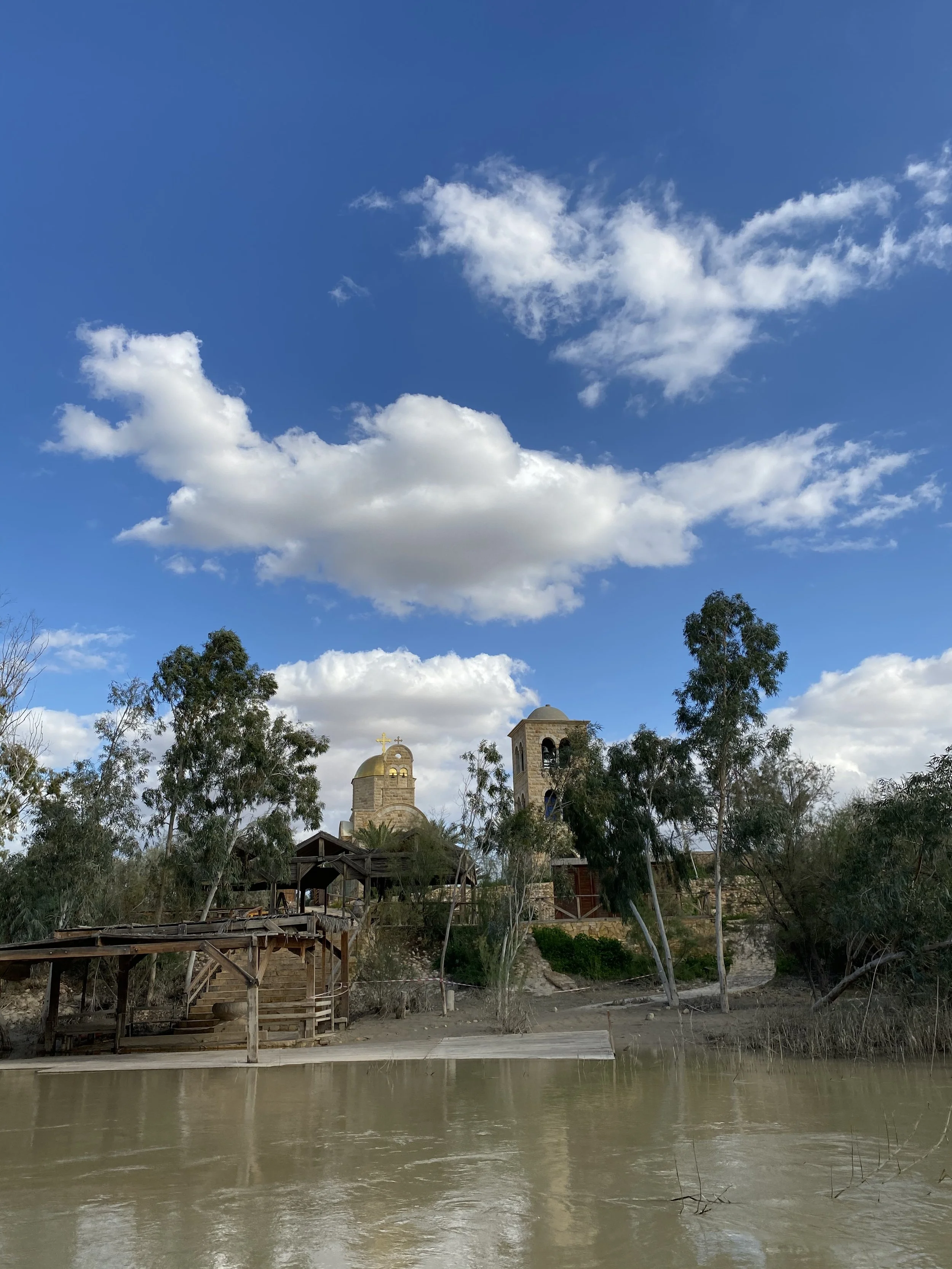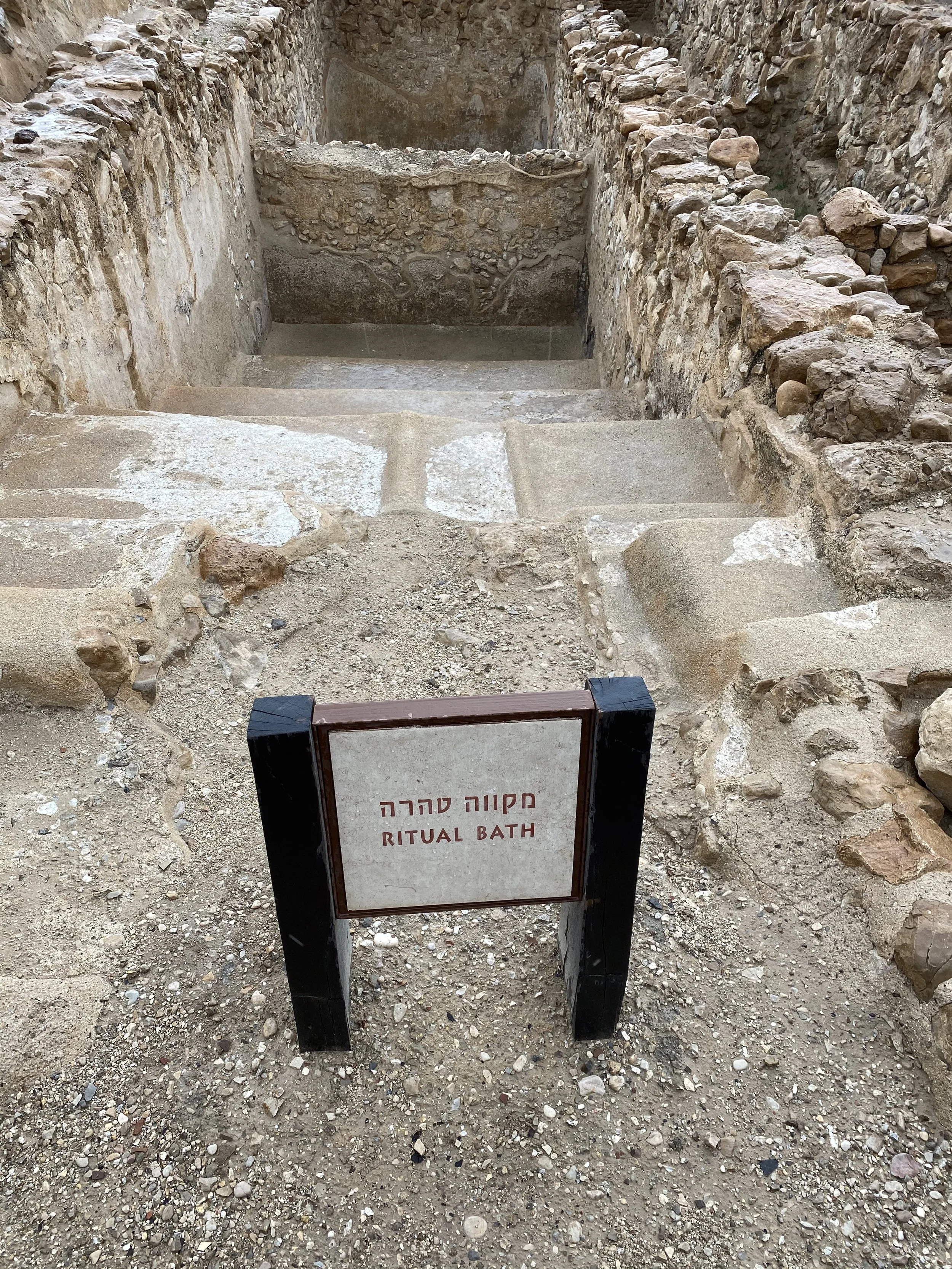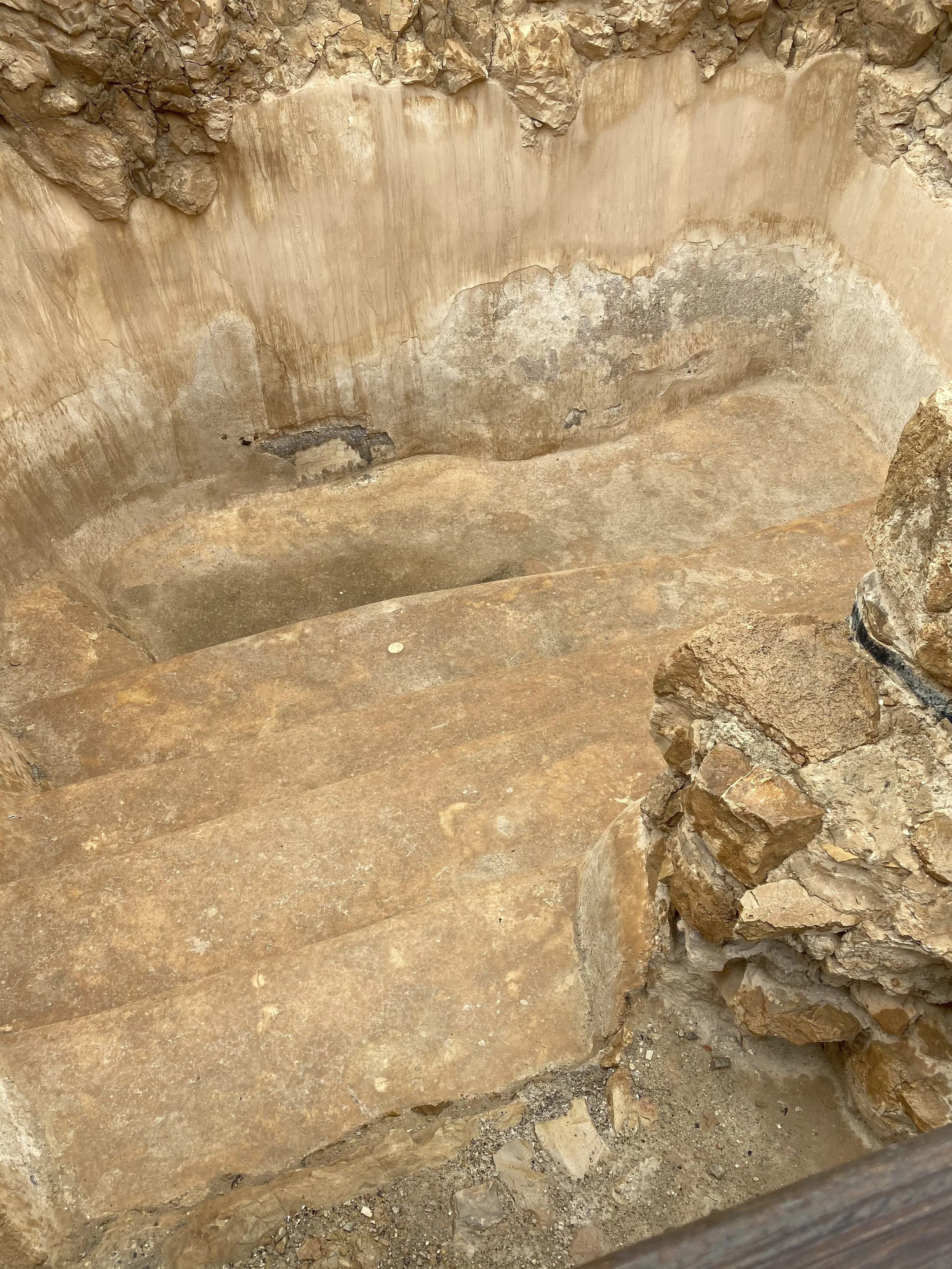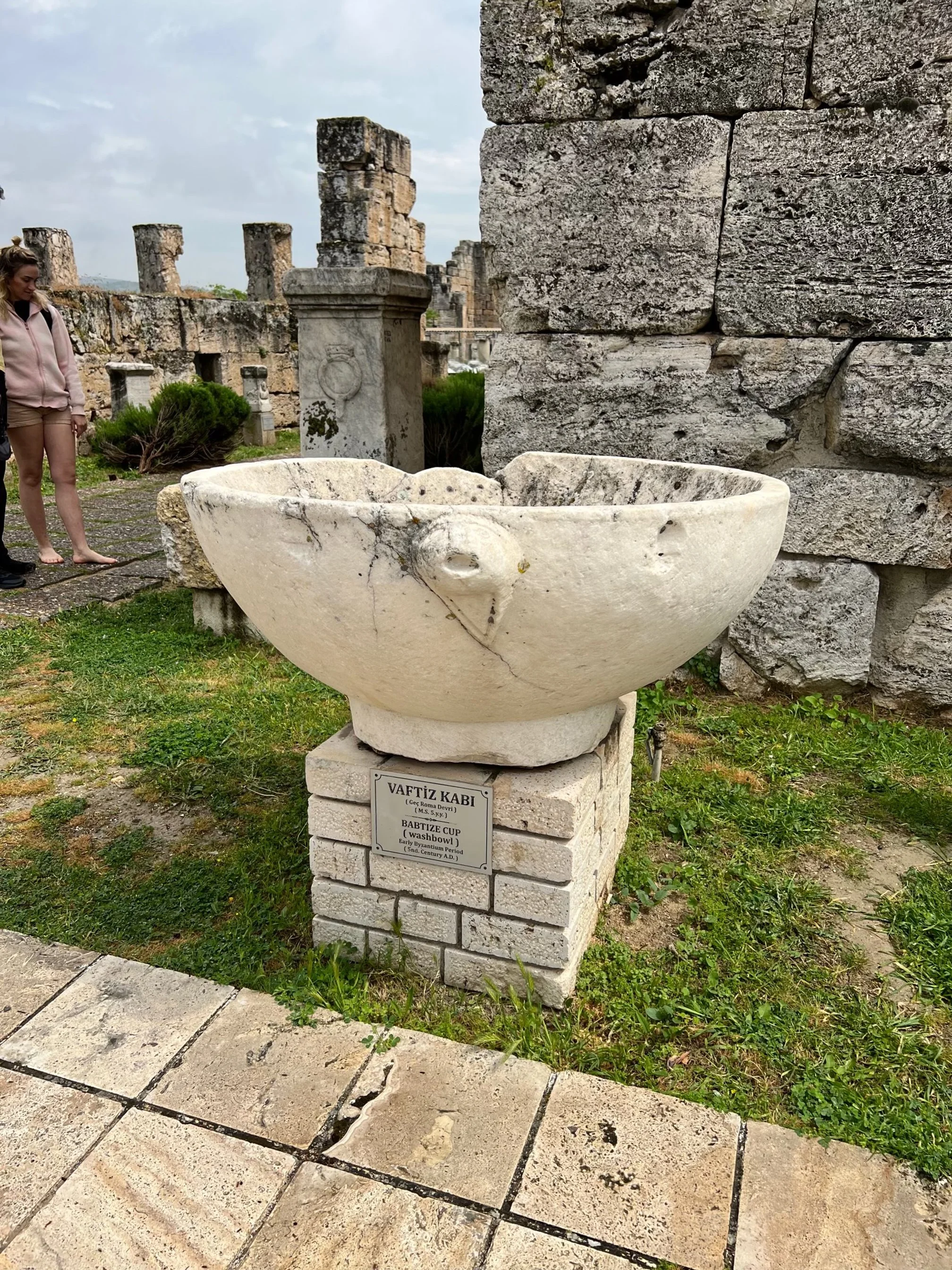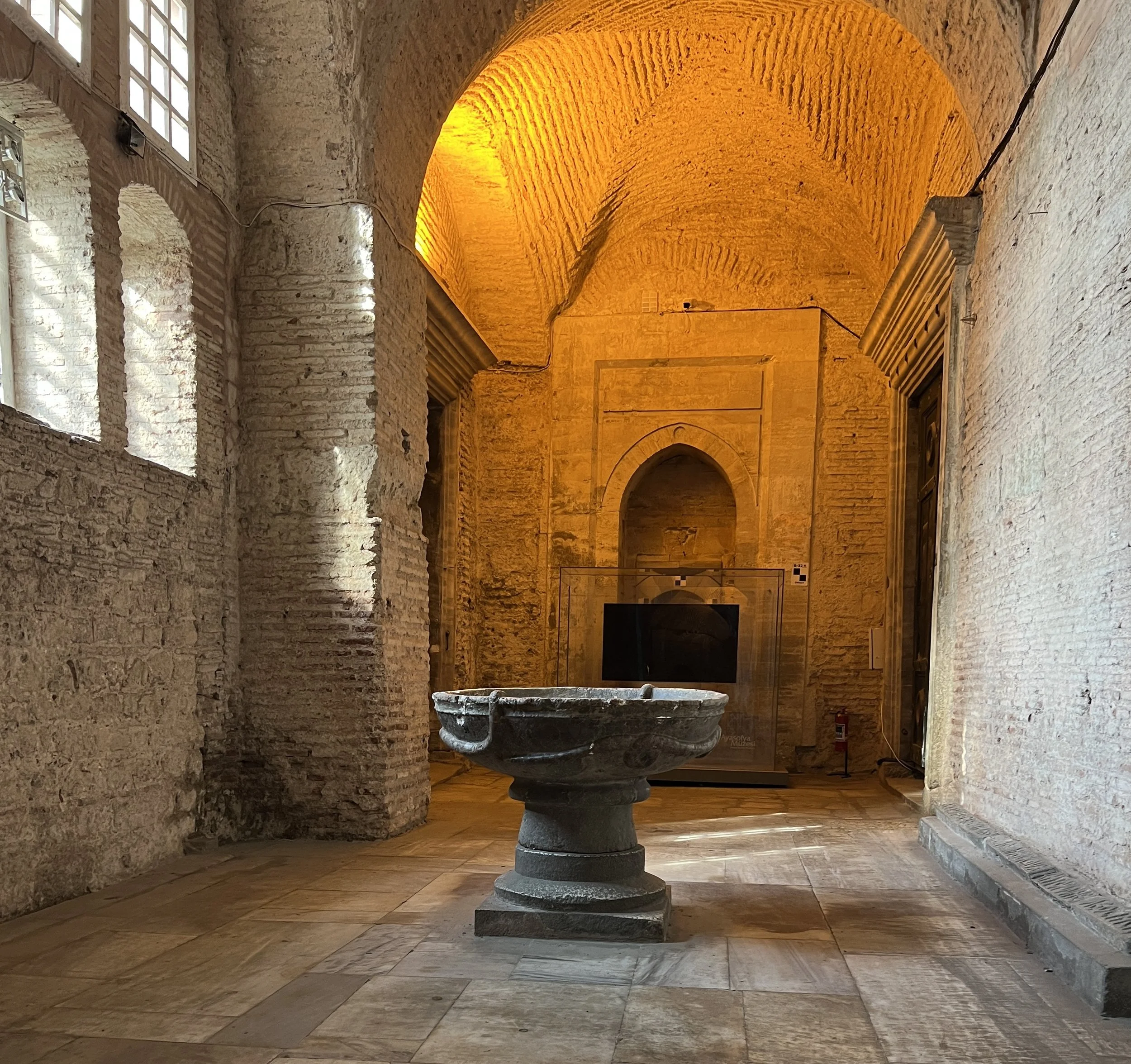Mikvah, Baptismal Pool, Baptismal Font
Then Jesus came from Galilee to the Jordan to John, to be baptized by him. John would have prevented him, saying,’Indeed to be baptized by you, and do you come to me?’ But Jesus answered him, “Let it be so now, for thus it is fitting for us to fulfill all righteousness”. Then he consented. And when Jesus was baptized, immediately he went up from the water, and behold the heavens were opened to him, and he saw the Spirit of God descending like a dove and coming to rest on him; and behold, a voice from heaven said, “This is my beloved Son, with whom I am well pleased.” Matthew 3:13 - 17
Ritual purification with water is woven all throughout the Bible and Jewish tradition and the roots of Christian Baptism exit here. In our Biblical travels we are always looking for the Mikvah, or in the early churches the Baptistry. We find it interesting to see the evolution of these material remains.
“Mikvah” in the Old Testament referred to a gathering of waters and is never spoken of as the stepped bath - but archeology shows that from about the 2nd century BC forward the purification rituals were facilitated by the Mikvah. Mikvah are found at excavations all over the Holy Land. Over 850 as of the Mid 2010’s usually from 2nd century BC to 1st century AD. In wealthy private home, near synagogues, near the temple in Jerusalem, along roads leading to Jerusalem. Anywhere living water of rivers / streams was not readily available, there was a Mikvah.
The earliest baptistries strongly resemble a Mikvah. A pool with a stepped entrance and exit which quickly took on a cruciform shape. Gradually the sunken pool gave way to large basins for baptism. In modern times all of these versions are used in Christian churches.
Jordan River area commemorating Jesus’ baptism. The Church of St John the Baptist is in the country of Jordan.

